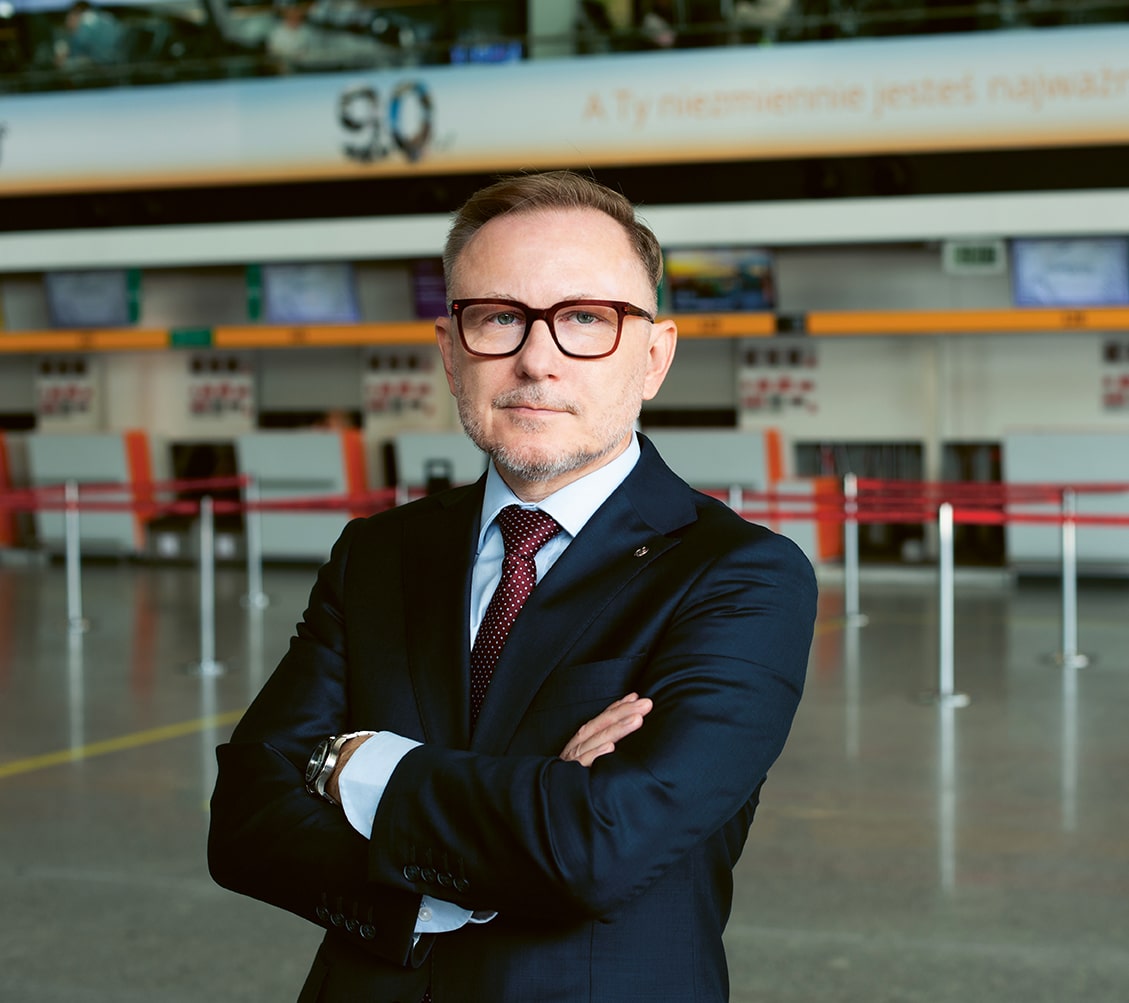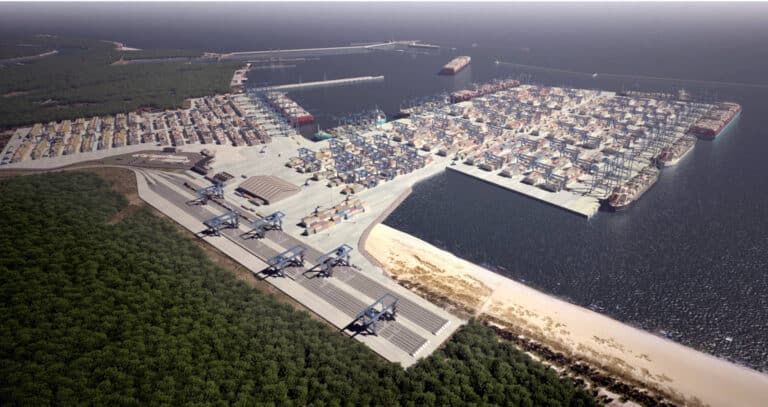The Future of Polish Aviation. Hub Strategy, Tech innovation & Sustainability
How can Poland position itself as a key aviation hub in Central and Eastern Europe? What role will technology and sustainability play in shaping the future of air travel? In an exclusive interview with Poland Weekly, Marcin Danił, Member of the Management Board at Polish Airports (PPL), a leading expert in the aviation industry, discusses PPL’s strategic vision for the next decade. From the modernization of Chopin Airport to embracing AI-driven airport management and green aviation solutions, he outlines the key steps Poland must take to stay competitive in the global aviation market. Don’t miss this insightful conversation on the future of Polish skies!
What are the key directions for the development of Polish aviation over the next decade, and what will be PPL’s role in this process?
Global aviation is moving in three distinct directions: hub development, technological advancement, and sustainable growth. A prime example is Turkey, where, within a decade, Istanbul has become one of the world’s largest aviation hubs, connecting Europe, Asia, and Africa. It is now the seventh-largest airport in the world. Dubai and Doha are following a similar strategy, consistently building their positions as key transport hubs.
For Poland, this means investing in an efficient air traffic management model, both at the central airport and regional airports. Countries like Germany and France have developed models where major hubs such as Frankfurt and Paris CDG operate in synergy with regional airports, creating a cohesive transportation system. PPL must follow this path by coordinating infrastructure development at the national level rather than treating airports as separate, competing entities.
The second key aspect is technological advancement. Airports in Amsterdam, Hong Kong, and Singapore have implemented full automation of check-in procedures, passenger flow prediction systems, and biometric verification, significantly reducing processing times and increasing operational efficiency. Poland’s airport infrastructure cannot lag behind—digitization, intelligent capacity management, and the use of artificial intelligence for air traffic forecasting are not future trends but necessities.
The third crucial trend is sustainable development. The European Union is imposing ambitious emission reduction targets for aviation, while global financial markets are increasing pressure for transparent ESG reporting. Modern airports such as Oslo, Heathrow, and Schiphol are already investing in hydrogen production, implementing sustainable aviation fuels, and optimizing the carbon footprint of ground operations. PPL is actively engaged in these processes, seeing them not only as regulatory obligations but also as long-term competitive advantages.
The modernization of Chopin Airport is one of PPL’s priorities. What are the key elements of this project, and what benefits will it bring to passengers and airlines?
Chopin Airport is the largest airport in Poland, but to meet the growing market demands, it must undergo extensive modernization. We look to airports like Frankfurt, which has improved capacity through airside infrastructure investments, and Singapore Changi, which has set new standards in passenger service quality.
The modernization of Chopin Airport will involve both aviation and terminal infrastructure. The redevelopment of taxiway layouts and the implementation of modern ground traffic management systems will reduce operation times and enhance efficiency. The passenger terminal will be expanded by 15%, improving capacity and travel comfort. The number of aircraft parking stands will also increase—by 34% for narrow-body aircraft such as the Airbus A320 and by 60% for wide-body aircraft like the Boeing 777.
Both passengers and airlines will benefit from these changes. Operational improvements will allow for more flight connections, while modern terminal solutions—including intelligent check-in systems, advanced security scanners, and biometric gates—will shorten waiting times and enhance service standards. The project is scheduled for completion by 2029, enabling Chopin Airport to efficiently handle over 30 million passengers annually and strengthen its position in the region.
In your opinion, should Polish airports remain under national ownership?
Looking at global trends, we see two airport management models: state-owned and privatized. In Germany, France, and Singapore, key airports remain under national control, ensuring stability and long-term planning. In the UK, privatization has led airports like Heathrow and Gatwick to be owned by international investment funds.
From the perspective of aviation sector stability, the German and French models appear more rational. Maintaining control over strategic aviation assets allows for better infrastructure planning and the ability to respond to changing market conditions. For PPL, it is crucial that investments in Polish airports are carried out thoughtfully, with a focus on long-term economic and passenger interests.
What changes in PPL’s management philosophy would you like to introduce to make the company even more efficient?
Modern airport management is based on data and technology. We take inspiration from Schiphol in the Netherlands and Changi in Singapore, which have successfully implemented flexible, intelligent operational management strategies.
We plan to expand the use of artificial intelligence and data analysis to optimize passenger traffic and infrastructure management. We are also increasing investments in service digitization—automating check-in and baggage handling processes, as well as implementing smart queuing systems. These solutions reduce processing times and improve travel comfort.
Financial efficiency is equally important. Airports worldwide generate a significant portion of their revenue from non-aviation activities, such as retail, dining, and cargo logistics. PPL is focused on diversifying its revenue streams to ensure that our airports remain not only functional but also consistently profitable.
What actions can help Poland become a key aviation hub in Central and Eastern Europe?
To become a regional hub, Poland must meet two key conditions: expand its long-haul flight network and build stable relationships with airlines.
Amsterdam and Frankfurt did not become global hubs overnight. Their positions result from consistent long-term strategies to develop extensive long-haul networks, particularly towards Asia and North America. Poland needs to strengthen its presence in these markets by attracting new carriers and expanding intercontinental connections.
The second crucial factor is collaboration with airlines. The success of Dubai and Doha is the result of close cooperation with national carriers, which have made these airports their primary bases. Poland must create attractive conditions for airlines—both operationally and financially—so that Warsaw becomes the natural transfer hub for the region.
The development of Polish aviation is a long-term process that requires consistent investments and strategic decisions. PPL is ready to play a key role in this transformation.







